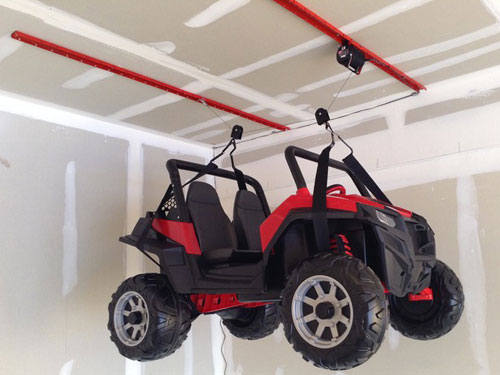
Having been asked by a neighbor to help haul her kayak onto her SUV one weekend morning last summer and finding it quite difficult — that’s with two of us doing the lifting — I saw myLifter as an obvious choice for this week’s TechNewsWorld Crowdfunding Spotlight. myLifter is a smartphone-controlled mini-winch now looking for funding on Kickstarter.
If you’ve ever tried lifting a kayak onto a vehicle roof rack — or indeed a cargo box or many other types of outdoor sporting equipment — you’ll know that it isn’t easy. A one-person kayak can weigh 50 pounds.

That’s generally also the maximum weight you can check into the hold of an airplane, and there’s a reason for that: It’s about as much as anyone, including beefy, union-card-wielding baggage handlers, can comfortably carry without injuring themselves — and that’s just carrying bags a few inches off the ground.
myLifter reckons it solves the outdoorsy gear-over-head problem with a small, winch-like, cable-driven lifter that you can bolt to a garage roof. The device resembles a hoist, or automobile winch, of the kind that four-wheel-drive aficionados use to drag themselves out of bogs and such, by way of tree for anchor.
In this case, wire is spooled around a ceiling-affixed drum and an electric motor turns the drum, thus extending or retracting the hook-ended cable. It’s all controlled by smartphone.
The creator reckons that it’s perfect for eliminating wasted space in garages because you can store in places that are generally hard to reach.
Technical Details
myLifter uses Bluetooth LE 4.0 to communicate with iOS devices, and automatic high and low points can be preset via an iOS app. DC power is supplied from a wall-mounted AC adapter.
Accessories that cost US$10 to $30 include a single-item lifting hook; a bike lifting kit; and kayak/cargo lifting kits.
The Numbers
Utah-based myLifter currently has more than 240 backers for its lifting-device project pledging more than $43,000 of a $50,000 goal. The funding period ends on Jan. 15, 2014.
A pledge of $75 gets you an early-bird myLifter at half off the proposed $150 retail price. A pledge of $150 gets you two early-bird myLifters that, linked together, can lift 100 lbs. Estimated delivery is May 2014.
The Upsides
As the population ages, we see this device aiding those who still wish participate in active lifestyles but who may find it a bit harder to do so than they used to. We also see it as being an advantage to active people living alone.
We think that installing a few of these would be a great weekender project, and that it’s a practical solution for “small-space” living fans for purposes including creating small apartment convertible living spaces. A series of myLifters could be used to hoist a bed or storage platform to the ceiling, for example. The smartphone functionality plays into this possibly younger demographic.
The Downsides
Although myLifter is really a hoist, there’s a reason why we brought up the analogy of the off-road automobile winch earlier, and that’s because we think myLifter needs to carefully study numerous anecdotal and documented tales of back-road winch failures in order to make the product suitably flawless.
Off-road 4 x 4-style winches are rated in loading weight capacity, but there are also subtle variables that come into play, such as the loading point at which the cable snaps; how long the motor can run without overheating, or duty cycle; how powerful the electric motor is, because more weight needs more power; excessive power considerations, because too much power can cause lighter objects to be lifted too quickly, possibly causing injury; and winch line management including cable snagging and bunching on the drum.
Many of these issues are not mentioned on the project’s Kickstarter page. Well-thought-out gears help with all of this, and we hope myLifter has done — or will be doing — much talking to many muddy, gnarly off-roaders as part of its R&D.




















































